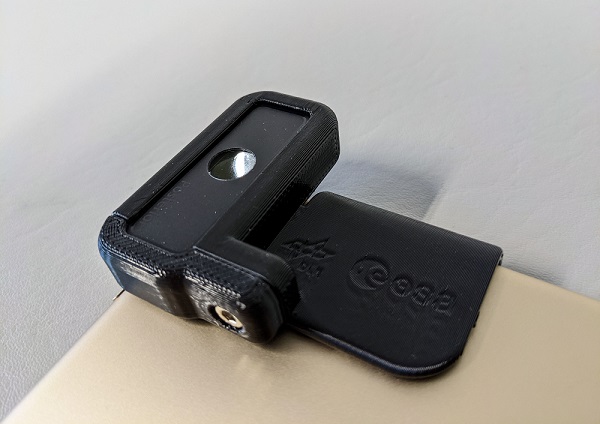- Home
- News Archive
More News
Want to Read Locked Articles?
Already Have an Account?

Register A Corporate Account
A corporate account gives you access to licensed reports and subscriptions, the latest news, a personalized dashboard, and weekly emails with news and data.
New Diagnostic Testing of Astronauts’ Vision Loss Set to Begin
Author: Joan McKenna

retinal images of astronauts in space. (Image courtesy of DLR and EAC)
European researchers will test a new way to monitor astronaut eye health with diagnostic equipment that headed to the International Space Station on Aug. 29 aboard the SpaceX resupply mission.
The European Space Agency (ESA) is sponsoring the project with the German Aerospace Center (DLR) Institute of Space Medicine and European Astronaut Centre (EAC).
The primary objective is to show that small, mobile, non-contact, light-based retinal imaging devices can capture fundus images of astronauts in microgravity conditions to detect progression of spaceflight-associated neuro-ocular syndrome (SANS).
The secondary objective is to show that a machine learning model can accurately detect a case of SANS.
In the weightlessness of space, astronauts often experience increased cranial pressure, headaches, swelling in the face, stuffiness, and changes in vision. SANS collectively refers to resulting vision pathologies such as optic disc edema, hyperopic shifts, globe flattening, cotton-wool spots, or choroidal folds.
NASA previously conducted extensive vision research with a larger diagnostic device in its Twins Study, with results released in April 2019. The study followed astronaut Scott Kelly’s nearly year-long mission in space in 2015 and 2016 and compared his health to that of twin and fellow astronaut Mark Kelly on the ground.
A veteran of three previous missions, Scott Kelly had seen his vision degrade during or after space travel, including experiencing poor intermediate vision after a 1999 trip. At the time of the Twins Study, the 50-year-old wore glasses for distance, but said he had no serious vision problems.
During the flight, Kelly experienced increases in subfoveal choroidal thickness (the primary vascular supply of the outer retina) and total peripapillary retinal thickness, indicating retinal edema formation.
The study found that some vision problems that occur in long-term spaceflight may persist from a previous mission and worsen in a subsequent mission.
Juergen Drescher, of DLR, a principal investigator of the new project, said astronauts currently are given glasses or contact lenses to address potential vision problems in flight. Multi-year missions to Mars may worsen these symptoms, and there is a need in space for a small mobile device for retinal image diagnostics, he said.
The project will use a commercially available ophthalmology lens approved for routine clinical use with mobile devices. In orbit, crew members will attach the hardware to their onboard ISS iPad Pro. During the data collection sessions, a crew member will take video images of a fellow astronaut’s retinas, and then the two will trade places. The generated data will be downlinked to researchers, along with data on ease of use and time required for testing.
Drescher noted that the technology has potential to provide diagnostics in remote and extreme environments on Earth at reduced cost, as well.
